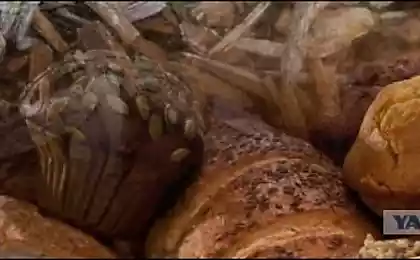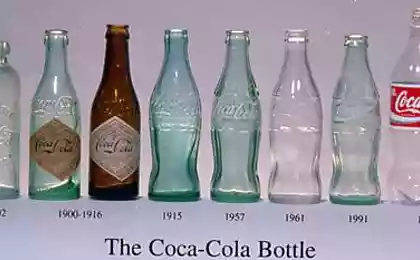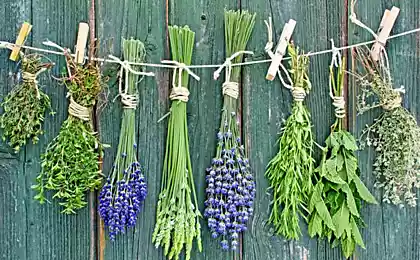709
Developed a new eco-friendly packaging
As reported by Markus böhm, marketing Director of "SIG Combibloc", the company developed a new environmentally friendly packaging that combines the best properties of cardboard boxes and bottles. The new product is a welcome answer to the problem of recycling the multilayer packaging for juices and dairy products.
High quality standards

The composite material of the packaging body is 75% composed of cellulose, coming only from certified FSC (Forest stewardship Council) forests or other controlled sources. This means that for the production of "Сombidome" is used only renewable wood raw materials and are not destroyed many acres of wildlife.
The results of the study lifecycle according to ISO standards showed that the cardboard packaging "Сombidome" emit 41% less carbon dioxide than multilayer PET bottles. When compared with single-layer PET bottles and disposable glass bottles, these figures are 27% and 75%, respectively.
Processing without problems

Many people can not even imagine how complex the design is a carton of drinks. The typical "Tetra Pak" consists of six to seven layers of different materials: outside is carton, inside is a very thin, less than a hundredth of a millimeter, aluminum foil, and between them, on the outer and inner surface is a plastic film. This structure allows the packaging to protect the product from harmful effects of light, ingress of foreign odors and moisture, keeping the nutrients and vitamins are preserved without any preservatives.
Fortunately, modern technology has learned to process the combination of the paperboard and the resulting raw material to be reused – however, this idea is long and troublesome. First, the method of hydropalace soaked packs to the pulp that is subsequently made paper towels and napkins. Floating on the surface or settled on the bottom of aluminum-plastic fraction as well share: the aluminium is the production of cement, and plastic granules are used as energy source.

Today, however, these technologies are only available for developed countries (in Europe, for example, recycles more than 50% of such packages). But the package-a bottle of "Сombidome" with the lid fully processed as a single item and are subject to the requirements of all national programs for recycling and disposal of waste.
What to expect in the future from cartons?

In 2011, the leadership of Tetra Pak, the world leader in the production of cellulose packaging for beverages, has published its objectives in the field of environmental protection, among which the increase in utilization of wastes 100% by 2020. In addition, the company intends at the same time to increase the use of certified Forest stewardship Council paperboard to 100%. The new targets will affect all links of the production chain, from suppliers to customers.
Despite this, most green-minded people refers to this packaging skeptical and prefer the good old glass. This material is absolutely safe and the higher carbon footprint compared to "Сombidome" result if a single use glass containers (which, of course, a conscious person will not allow). And then, health-conscious people prefer to questionable drinks, juice from concentrate, freshly squeezed juice from fruits and vegetables.

Source: /users/104
High quality standards

The composite material of the packaging body is 75% composed of cellulose, coming only from certified FSC (Forest stewardship Council) forests or other controlled sources. This means that for the production of "Сombidome" is used only renewable wood raw materials and are not destroyed many acres of wildlife.
The results of the study lifecycle according to ISO standards showed that the cardboard packaging "Сombidome" emit 41% less carbon dioxide than multilayer PET bottles. When compared with single-layer PET bottles and disposable glass bottles, these figures are 27% and 75%, respectively.
Processing without problems

Many people can not even imagine how complex the design is a carton of drinks. The typical "Tetra Pak" consists of six to seven layers of different materials: outside is carton, inside is a very thin, less than a hundredth of a millimeter, aluminum foil, and between them, on the outer and inner surface is a plastic film. This structure allows the packaging to protect the product from harmful effects of light, ingress of foreign odors and moisture, keeping the nutrients and vitamins are preserved without any preservatives.
Fortunately, modern technology has learned to process the combination of the paperboard and the resulting raw material to be reused – however, this idea is long and troublesome. First, the method of hydropalace soaked packs to the pulp that is subsequently made paper towels and napkins. Floating on the surface or settled on the bottom of aluminum-plastic fraction as well share: the aluminium is the production of cement, and plastic granules are used as energy source.

Today, however, these technologies are only available for developed countries (in Europe, for example, recycles more than 50% of such packages). But the package-a bottle of "Сombidome" with the lid fully processed as a single item and are subject to the requirements of all national programs for recycling and disposal of waste.
What to expect in the future from cartons?

In 2011, the leadership of Tetra Pak, the world leader in the production of cellulose packaging for beverages, has published its objectives in the field of environmental protection, among which the increase in utilization of wastes 100% by 2020. In addition, the company intends at the same time to increase the use of certified Forest stewardship Council paperboard to 100%. The new targets will affect all links of the production chain, from suppliers to customers.
Despite this, most green-minded people refers to this packaging skeptical and prefer the good old glass. This material is absolutely safe and the higher carbon footprint compared to "Сombidome" result if a single use glass containers (which, of course, a conscious person will not allow). And then, health-conscious people prefer to questionable drinks, juice from concentrate, freshly squeezed juice from fruits and vegetables.

Source: /users/104






















